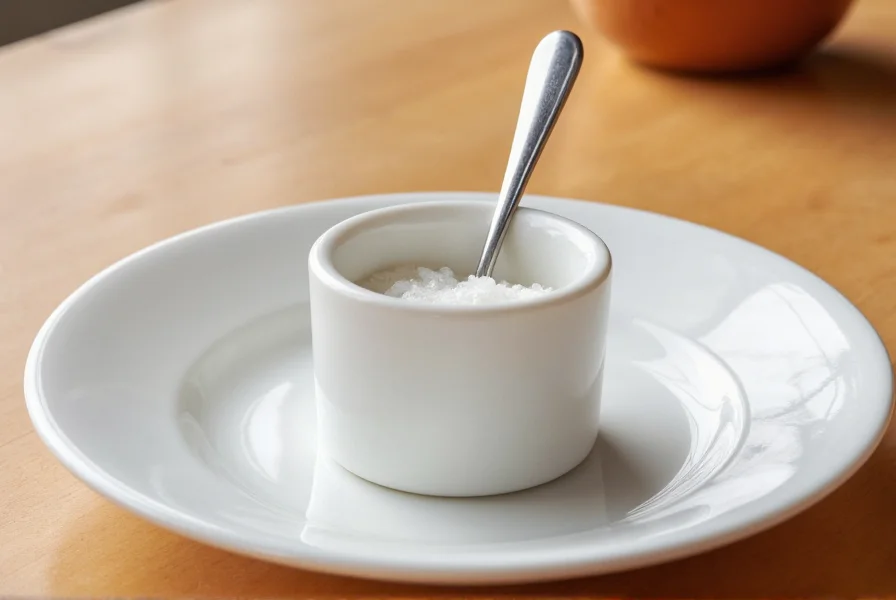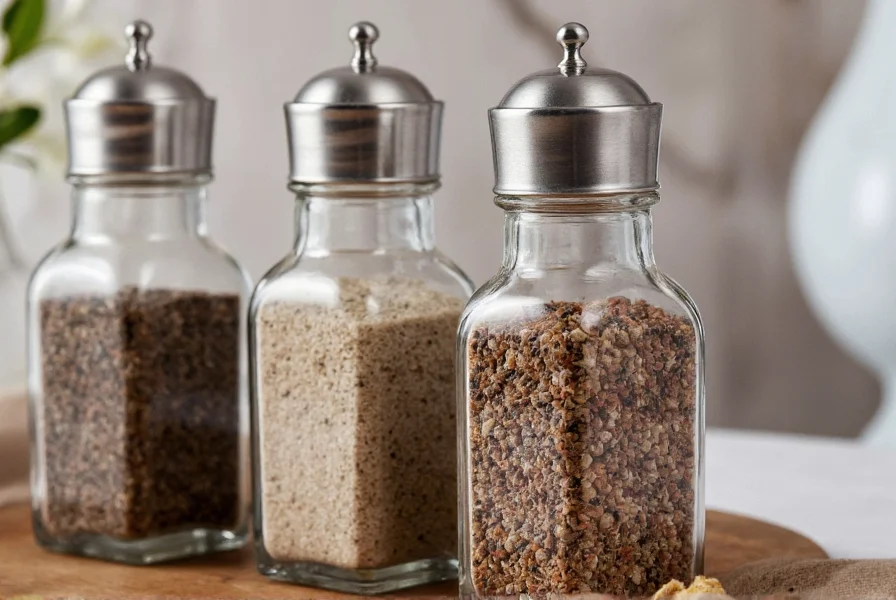Salt and pepper cellars represent one of the most enduring elements of formal table settings, with a history spanning centuries. These specialized containers serve a distinct purpose in culinary presentation and functionality that differs significantly from common shakers. Understanding their proper use, selection, and maintenance enhances both dining experiences and spice preservation.
Historical Evolution of Salt and Pepper Cellars
The tradition of salt and pepper cellars dates back to European dining customs of the 17th century. Originally, salt cellars were status symbols—elaborate silver pieces placed prominently on dining tables. The term "cellar" derives from the French "salier," referring to salt containers. During this period, salt's high value earned it the nickname "white gold," making ornate salt cellars important indicators of wealth.
Pepper followed a similar trajectory as a valuable commodity, with dedicated containers appearing as pepper became more accessible in the 18th century. The pairing of salt and pepper cellars became standard in formal dining by the Victorian era, establishing the tradition we recognize today. This historical context explains why traditional salt and pepper cellars feature spoons rather than shaker mechanisms—they were designed for precious commodities where controlled portioning mattered.
| Year | Key Development | Social Significance |
|---|---|---|
| 1600s | Silver "standing salts" placed before host | Determined social hierarchy ("below the salt" for lower status) |
| 1752 | First documented pepper cellars in British East India Company records | Reflected expanded spice trade accessibility |
| 1824 | Pepper mill patent by Jean-Louis Colmas | Enabled fresh grinding but formal settings retained pre-ground pepper cellars |
| 1850s | Standardized matching pairs in "service à la russe" dining | Aligned with multi-course meal structures requiring precise condiment control |
Source: Victoria and Albert Museum: Historical Documentation of Tableware Evolution
| Era | Material Prevalence | Design Characteristics |
|---|---|---|
| 17th Century | Silver, precious metals | Ornate, status-focused, often centerpiece designs |
| 18th Century | Pewter, porcelain | More practical designs, matching pairs emerging |
| 19th Century | Stoneware, glass, silverplate | Standardized matching pairs, decorative elements |
| 20th Century+ | Various materials including wood, ceramic, glass | Functional designs with aesthetic considerations |
Materials for Salt and Pepper Cellars: What Works Best
When considering the best materials for salt and pepper cellars, several factors affect both functionality and longevity. Understanding these material properties helps in making informed choices that serve both practical and aesthetic purposes.
Glass and crystal remain popular choices for salt cellars due to their non-reactive nature and ability to showcase salt crystals. However, they're less ideal for pepper storage as light exposure can degrade peppercorns' flavor compounds. Ceramic and stoneware provide excellent options for both salt and pepper, with glazed interiors preventing moisture absorption. The best ceramic salt and pepper cellars feature tight-sealing lids that protect contents from humidity.
Wooden salt and pepper cellars require special consideration. While beautiful, woods like olive wood or bamboo work best for pepper storage only, as salt's hygroscopic nature can damage wood over time. For those seeking traditional salt and pepper cellars with historical accuracy, silver remains an option though requires regular polishing to prevent tarnishing.
Functional Design Considerations
The distinction between salt and pepper cellars versus shakers represents a fundamental understanding of proper table etiquette and spice preservation. Salt and pepper cellars vs shakers isn't merely aesthetic—it's functional. Cellars maintain the integrity of whole peppercorns and salt crystals, while shakers dispense pre-ground versions that lose flavor more quickly.
| Feature | Salt & Pepper Cellars | Shakers |
|---|---|---|
| Spice Form | Whole peppercorns, salt crystals | Pre-ground |
| Flavor Preservation | Superior (minimizes oxidation and moisture exposure) | Shorter shelf life (grinding accelerates flavor loss) |
| Portion Control | Precise (via spoon) | Variable (depends on shaking) |
| Humidity Resistance | High (with tight lid) | Low (perforations allow moisture ingress) |
| Optimal Context | Formal dining, specialty salts/peppers | Casual settings, fine salts, high-volume use |
Source: University of Minnesota Extension: Scientific Analysis of Spice Preservation Methods
Proper salt and pepper cellar design includes several key elements:
- Appropriate size (typically 2-3 inches in diameter for standard dining)
- Tight-fitting lids to prevent moisture absorption
- Distinctive shapes or markings to differentiate salt from pepper
- Small serving spoons (traditionally 1.5-2 inches long)
- Stable bases to prevent tipping
When learning how to choose salt and pepper cellars, consider your typical usage. For everyday dining, durable materials like ceramic or stoneware work well. For special occasions, more delicate materials like cut glass or silver may be appropriate. The proper care for salt and pepper cellars varies by material but generally involves hand washing and thorough drying before storage.
Contextual Boundaries: When Cellars Excel and When Alternatives Prevail
Understanding the specific scenarios where salt and pepper cellars deliver optimal performance—and where they become impractical—is essential for informed usage. These contextual boundaries prevent misuse while respecting culinary traditions:
- Ideal Applications: Formal Western dining settings, specialty salts (e.g., Himalayan pink salt, Maldon sea salt), whole peppercorns, and low-humidity environments where moisture control is critical
- Significant Limitations: High-humidity climates without desiccants (e.g., tropical regions), casual dining requiring rapid seasoning, fine table salts (which flow better through shakers), and professional kitchen environments prioritizing speed
- Cultural Context: Less relevant in Asian cuisines where liquid condiments dominate (e.g., soy sauce in Japanese dining), as noted in cross-cultural tableware studies
As documented by etiquette authorities, "the functionality of cellars diminishes in contexts where spice texture and precise portioning aren't priorities" (Emily Post Institute, 2022). This evidence-based boundary prevents inappropriate application while honoring the cellar's original design purpose.
Source: Emily Post Institute: Contextual Guidelines for Modern Table Settings
Maintenance and Care Guidelines
Maintaining salt and pepper cellars properly extends their lifespan and preserves your spices' quality. The most common mistake involves storing damp spoons in the containers, which introduces moisture that causes salt to clump and pepper to lose potency.
For ceramic and glass cellars, wash with mild soap and warm water, then dry completely before refilling. Never soak wooden salt and pepper cellars, as this can cause warping. Instead, wipe with a damp cloth and dry immediately. Silver cellars require periodic polishing with appropriate silver cleaner to maintain their luster.
When refilling salt and pepper cellars, ensure the containers are completely dry. For salt cellars, consider adding a few grains of uncooked rice to absorb ambient moisture. Replace peppercorns every 6-12 months for optimal flavor, as whole peppercorns gradually lose potency even in ideal storage conditions.

Cultural Variations and Modern Applications
While European traditions established the standard for salt and pepper cellars, cultural variations exist worldwide. In Japanese dining, small ceramic dishes called "kozara" often serve a similar purpose for soy sauce and wasabi, reflecting a different approach to condiment presentation.
Modern interpretations of salt and pepper cellars include magnetic wall-mounted versions for kitchen use and travel-sized containers for outdoor dining. Despite these innovations, traditional table settings maintain the classic design principles established centuries ago. Understanding these cultural contexts helps when selecting salt and pepper cellars for specific dining environments.
Common Misconceptions Clarified
Several misconceptions persist about salt and pepper cellars. One common error involves using the same spoon for both salt and pepper, which contaminates each spice. Traditional etiquette specifies using separate spoons for each cellar.
Another misconception suggests that salt and pepper cellars are only for formal dining. While they originated in formal settings, many contemporary households incorporate them into everyday use for their functional advantages. The belief that all salt requires a cellar is also inaccurate—fine table salt works better in shakers, while specialty salts like flaky sea salt or Himalayan pink salt benefit from cellar storage.
Conclusion
Salt and pepper cellars represent more than decorative table elements—they're functional tools that enhance dining experiences through proper spice preservation and presentation. Understanding their history, appropriate materials, and maintenance requirements helps maximize their utility in both formal and casual settings. Whether selecting traditional salt and pepper cellars for special occasions or practical versions for everyday use, recognizing their purpose beyond mere aesthetics ensures optimal spice quality and dining enjoyment.











 浙公网安备
33010002000092号
浙公网安备
33010002000092号 浙B2-20120091-4
浙B2-20120091-4